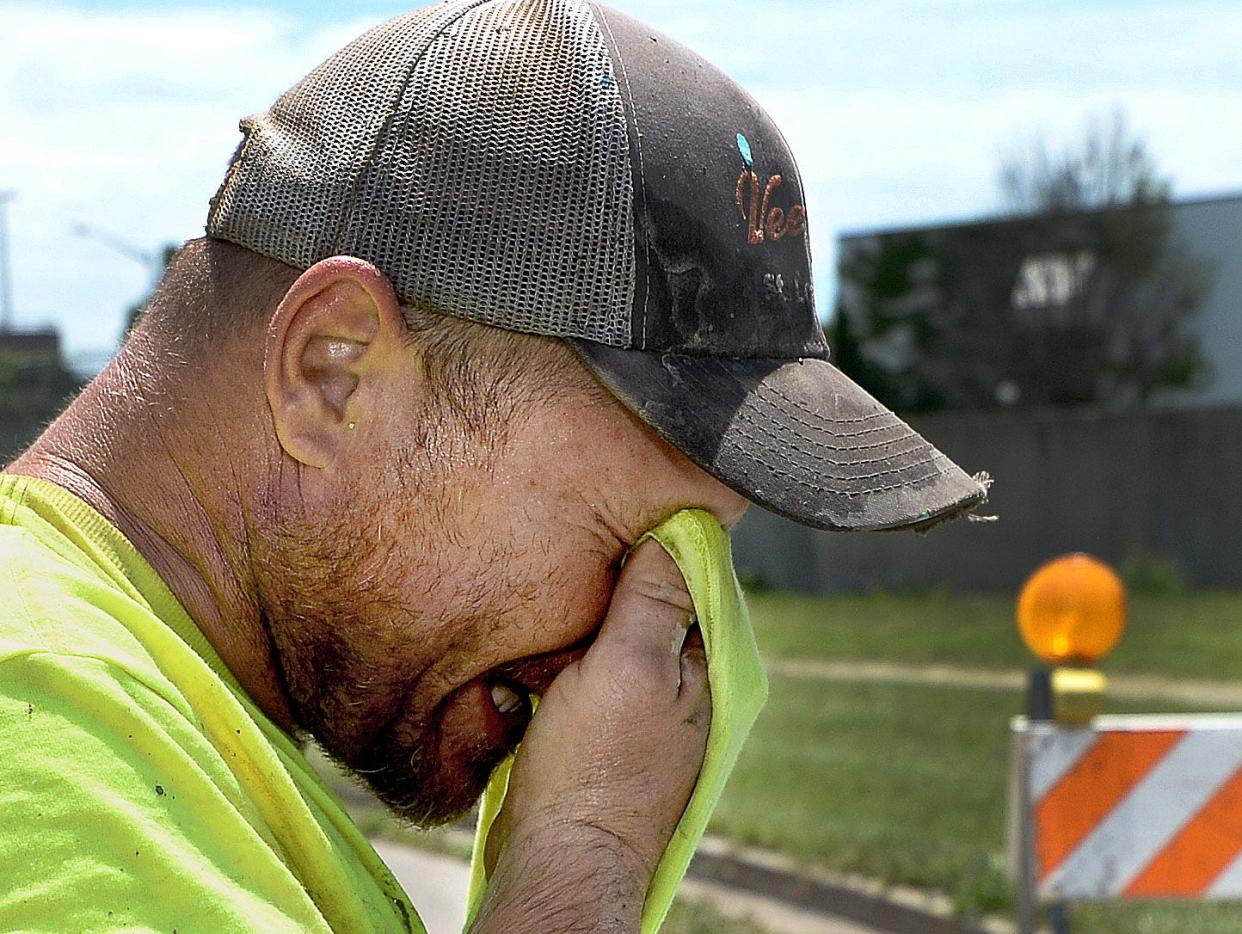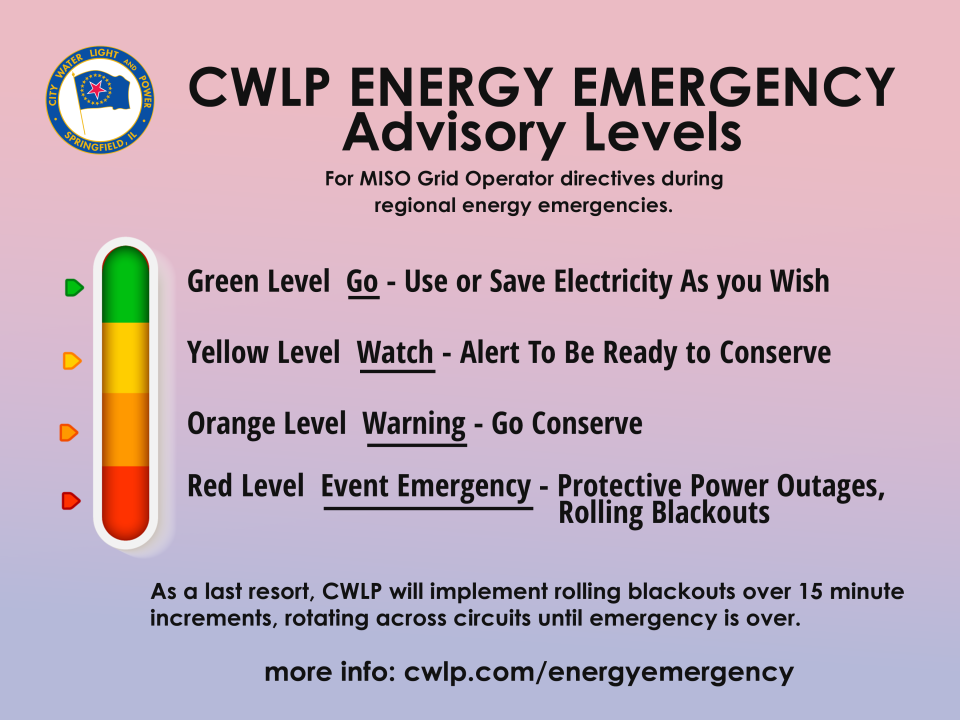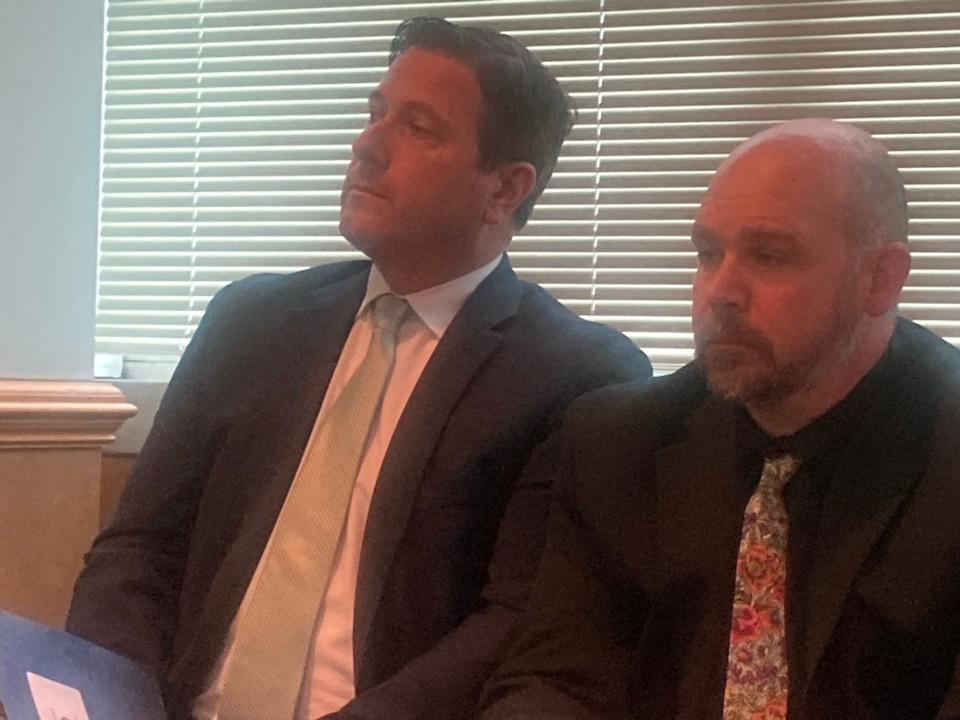CWLP: Still a continued risk of rolling blackouts this summer. Here's why

City Water, Light and Power officials said there is a continued risk of rolling blackouts in Springfield, with July posing the highest risk because of extreme temperatures and usage.
Utility users could be informed of the rolling blackouts, or "protected power outages," on the day of the event, and officials continued to insist the outages would last in the 15-minute range.
Against the backdrop of the area's consecutive 90 degree temperature days and increased energy usage, CWLP revealed on social media new graphics detailing a range of blackout warnings for consumers. There's also a webpage dedicated to the situation.
The information was detailed by Amber Sabin, a spokeswoman for CWLP, in a presentation to the Springfield City Council Tuesday.
Blackouts: Are rolling electrical blackouts a possibility here this summer? It's complicated
The decisions about rolling blackouts aren't made by CWLP, Sabin added, but rather by a member-based organization of grid operators on a regional basis.

CWLP belongs to the Midcontinent Independent System Operator, or MISO, which is comprised of 15 states stretching from Louisiana into Manitoba, Canada, and is further broken down into regions. Illinois, minus Chicago and some northern counties, is part of the North Central region.
CWLP can't disconnect from the grid to escape the possible rolling blackouts.
Sabin said weather, electricity usage, transmission constraints and power plants going offline could all ultimately contribute the possibility of rolling blackouts.
"It's something we really can't predict," Sabin said. "All that we know is MISO said there's some risk (about the possibility). July has the highest risk and it's going to increase with more plant retirements next year."

The Climate Prediction Center is calling for "slightly above normal (high) temperatures" for July, said Nicole Batzek, a meteorologist with the National Weather Service in Lincoln. The Climate Prediction Center is a partner with the NWS.
The normal high temperature for Springfield for July 1 is 87 degrees while the normal high for July 31 is 86 degrees, said Batzek.
Sabin said CWLP will use four different color-coded levels of warning for utility users.
A green level means no emergency has been implemented requiring conservation, Sabin said. Yellow level is "like a watch," with CWLP customers on alert to be ready to conserve.
An orange level warning advises customers to conserve energy, like turning up thermostats, postponing major appliance use and unplugging electronic devices.
A red level warning, Sabin said, would signal rolling blackouts in 15-minute increments.
Doug Brown, the chief utility engineer at CWLP, said he wouldn't anticipate businesses or residences getting hit with a rolling blackout the same day.
"It also depends on the quantity, the amount of load that has to be dropped from MISO, that will dictate what grouping they can do for circuits and how frequently they have to cycle through," Brown said. "The plan in general, what we expect, is that we'll have quite a while before we'd have to repeat that."
If, for instance, a rolling blackout gets through 20 of its 100 circuits on the grid, CWLP would pick up with the next set of circuits the next time rolling blackouts are mandated.
"We're trying to minimize the impact to everyone," Brown said.
Asked about how much advanced warning consumers might get, Sabin said "a lot of times it's going to be same day. As much warning as we will get, we will try to turn it around to the public. Internally, we're going to be already doing steps to prepare for conservation."
If they do come, the rolling blackouts would be during peak usage, between 3 and 8 p.m. during the weekdays, Brown said.
HSHS St. John's and Springfield Clinic have their own circuits and are pretty much out of rolling blackouts, Brown said. CWLP will be talking to officials at Springfield Memorial Hospital soon, he added.
There's a separate substation that serves a majority of the State Capitol Complex.
"They're not a part of that blackout," Brown said.
More: Mayor Langfelder wants to appoint Summer Griffith as director of Lincoln Library
Sabin said CWLP will post any warnings and updates on Facebook and Twitter in addition to its webpage.
Customers are urged to update their contact information, including email address and phone numbers, she said. Those sync with CWLP's outage management system and it can use those in future text alerts and communications.
Online account management can be set up at myCWLP. For city text alerts and neighborhood news, sign up at www.springfield.il.us. For further assistance, you can email at PublicInformation@cwlp.com.
Contact Steven Spearie: 217-622-1788, sspearie@sj-r.com, twitter.com/@StevenSpearie.
This article originally appeared on State Journal-Register: Rolling blackout power outages could still happen for Springfield IL

